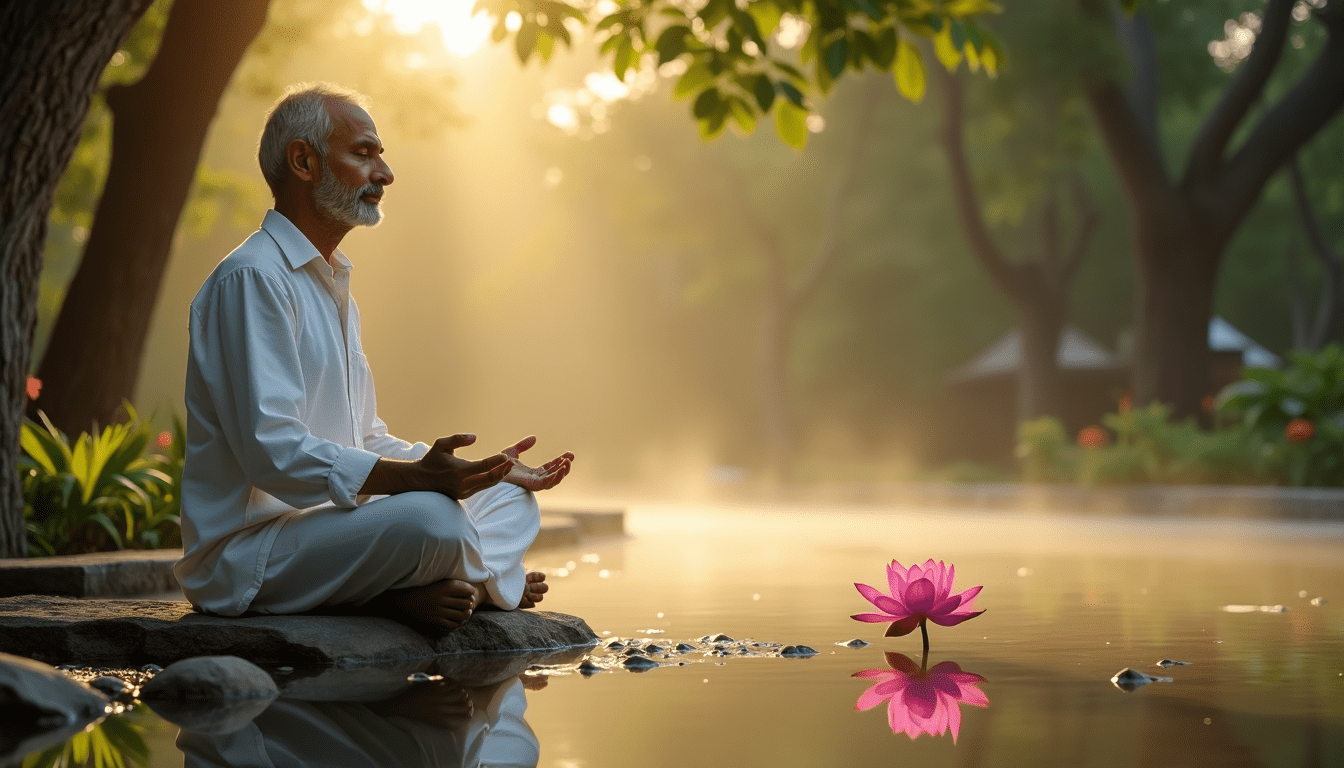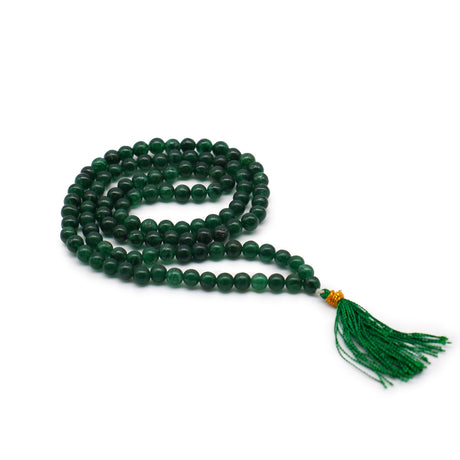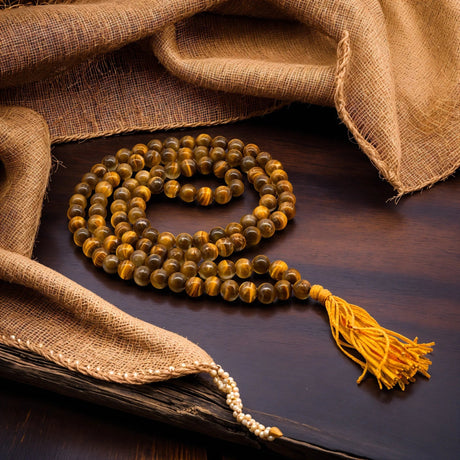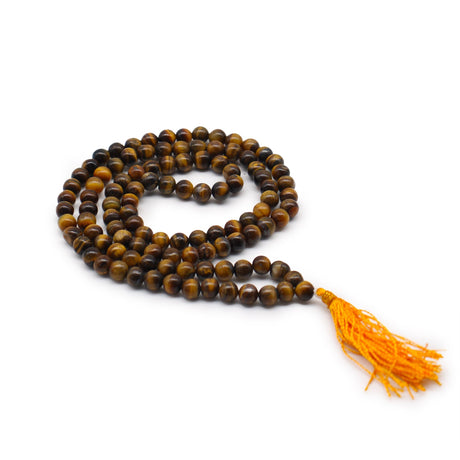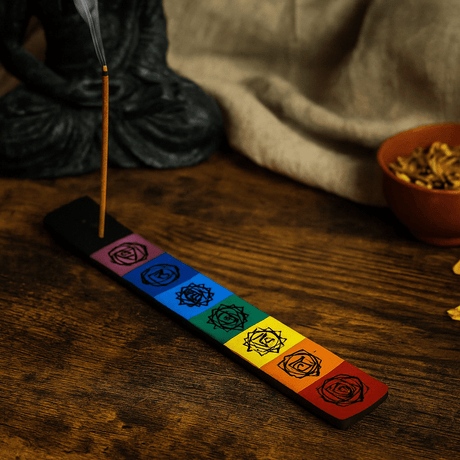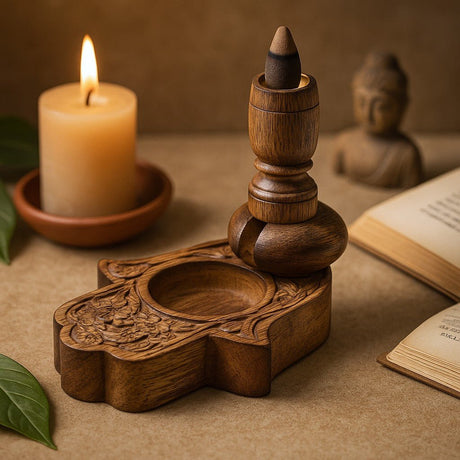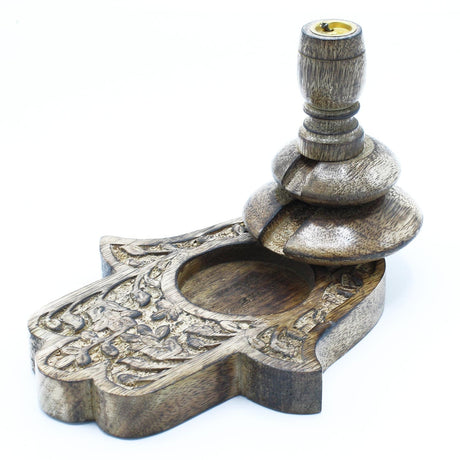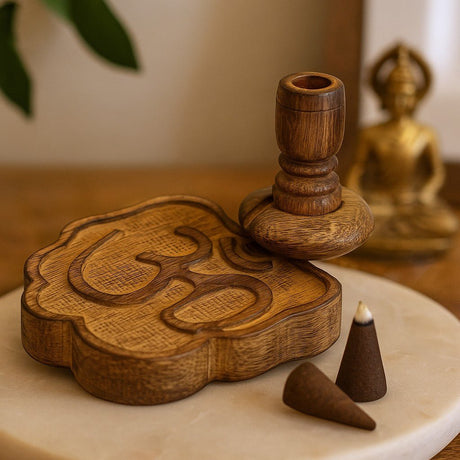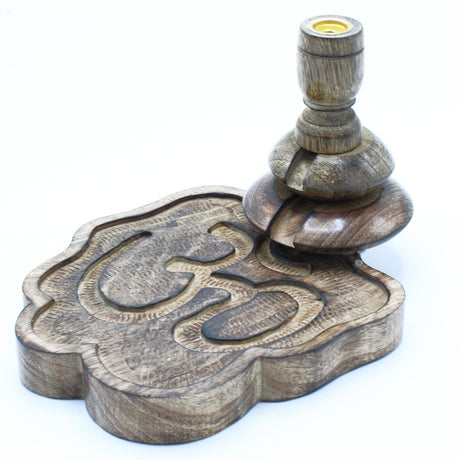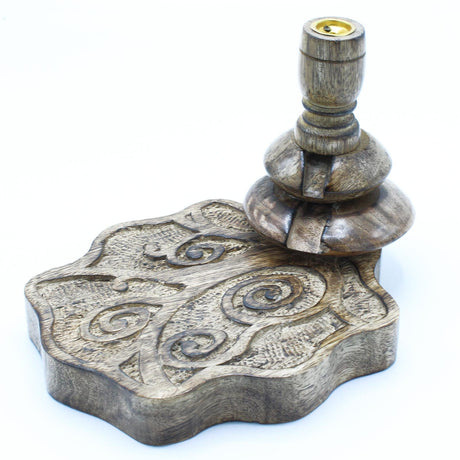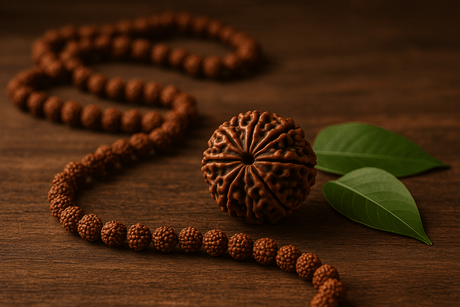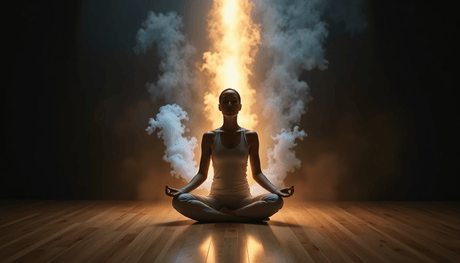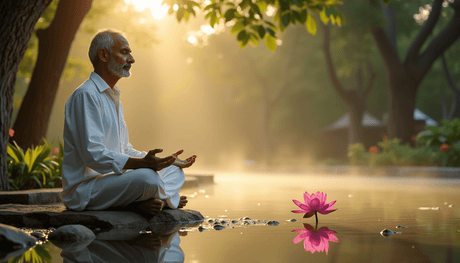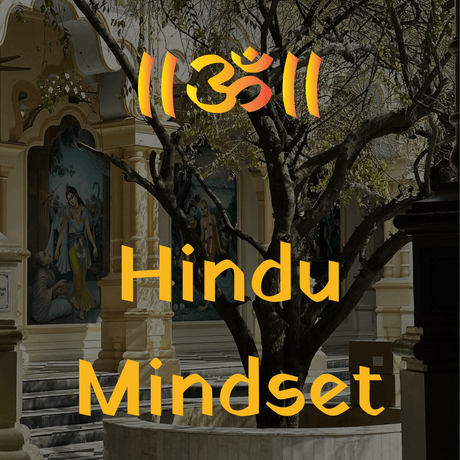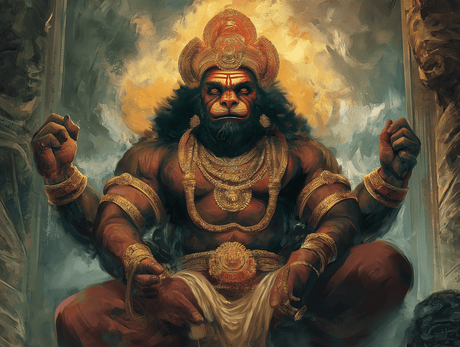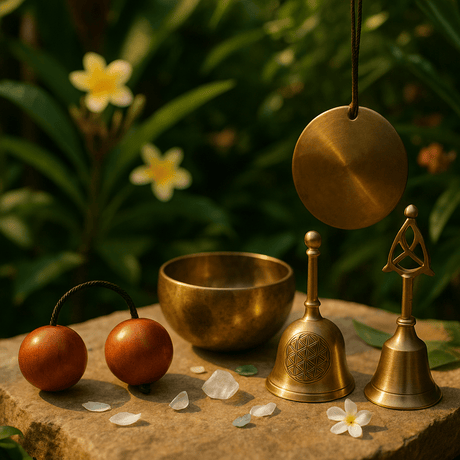Pratyaksha stands as the first of the four "means of valid knowledge" in Hindu philosophy. This profound concept of direct perception shapes our understanding of reality. The term's meaning reveals a deep connection to sensory experience by combining "prati" (before) and "akṣa" (sense-organ).
The Nyaya school's philosophy defines perception as "non-erroneous cognition produced by the intercourse of sense-organs with objects." Direct perception forms the foundation for all other means of knowledge, but it faces several challenges. Objects might be too distant or sensory impairments can block our way to perceive reality accurately.
This complete guide explores Pratyaksha's ancient wisdom and its practical applications in spiritual growth. You'll also learn ways to overcome common obstacles that limit your direct perception of truth.
What is Pratyaksha: Understanding Direct Perception
The Sanskrit word Pratyaksha combines two elements: "prati" (before) and "aksha" (sense-organ). This term literally means "that which is perceptible to the eye or visible". The ancient concept has everything present before the eye, which our sense organs can recognize or consciousness can clearly see.
Pratyaksha stands as one of the main ways to gain knowledge (pramana) in Indian philosophy. It offers the most direct route to understanding reality. This concept goes way beyond just visual perception and covers all forms of sensory awareness and direct experiential knowledge.
Basic definition and etymology
Classical Indian philosophical tradition sees pratyaksha as cognition that rises within the self through mental operations after sense-object contact. Direct perception forms the foundation for all other ways we acquire knowledge. The concept's reach spans both external perception from our senses interacting with worldly objects and internal perception from our mind's cognitive processes.
Types of perception in Vedic texts
Classical Indian philosophy recognizes four valid types of perceptions:
- Indriya pratyaksha (sense perception): Works through sense organs and physical objects interacting, where intelligence-energy acts as the sensory foundation
- Manas pratyaksha (mental perception): Emerges when intelligence-energy, backed by Buddhi (intellect), reflects on sensory objects
- Svavedana pratyaksha (self-consciousness): Develops as the self's intelligence becomes aware of various elements like attachment, knowledge, and time
- Yoga pratyaksha (super-normal intuition): Results from the intelligent-self's purification through yogic discipline
Pratyaksha knowledge shows itself through two main channels: worldly perception and transcendental perception. Worldly perception works externally through our five senses and internally through the mind. Transcendental perception breaks down into Samanya, Lakshana, Gyana lakshana, and Yogaja.
The Nyaya school makes a vital distinction between two stages of perception: nirvikalpa (indeterminate) and savikalpa (determinate). These stages represent sequential phases in the same perceptual process rather than different types. Raw sensory data gets captured in the indeterminate stage and then processed into determinate perception through mental classification.
The Historical Evolution of Pratyaksha
Pratyaksha's roots date back to the late Vedic period (1500-500 BCE). This philosophical concept started as a response to basic questions about knowledge and perception. The simple idea of sensory observation grew into a sophisticated system of epistemological understanding.
Origins in ancient texts
The Nasadiya hymns of Rigveda's Book 10, Chapter 129 contain the earliest mentions of pratyaksha. These hymns turned spiritual questions into logical propositions. A major breakthrough came in the 2nd century CE when Aksapada Gautama wrote the Nyāya Sūtras. His work established pratyaksha as the life-blood of Indian epistemology.
Development across different schools
Orthodox schools of Indian philosophy shaped pratyaksha through systematic debate and interpretation. These schools emerged to:
- Systematize Vedic teachings
- Address challenges from heterodox schools
- Create detailed epistemological frameworks
- Take part in philosophical discourse
The Nyaya school made remarkable contributions by establishing pratyaksha as the foundation for all other forms of knowledge. Scholars refined the concept and identified four key requirements for valid perception:
- Indriyarthasannikarsa: Direct sensory contact with objects
- Avyapadesya: Non-verbal, first-hand experience
- Avyabhicara: Steadfast perception
- Vyavasayatmaka: Definite, doubt-free observation
Modern interpretations
Today's understanding of pratyaksha blends traditional wisdom with contemporary applications. Scholars see its value in a variety of fields, from empirical research to spiritual practice. Pratyaksha serves as a benchmark to review other forms of knowledge, and it remains central to epistemological discussions.
The concept's lasting impact comes from its practical use in proving knowledge claims. What began as a philosophical tool ended up becoming a detailed framework for understanding human perception and consciousness. This progress shows how ancient Indian philosophy continues to give great insights into direct experience and knowledge acquisition.
How Pratyaksha Works in Spiritual Practice
We can understand pratyaksha's mechanics by learning its basic role in spiritual development. Our consciousness, sensory faculties, and mental processes work together in a complex way.
The role of sense organs
Direct perception begins with indriya pratyaksha (sensory perception). This works through five different channels:
- Shrotra pratyaksha: Auditory perception through ears
- Sparshana pratyaksha: Tactile perception via skin
- Chakshusha pratyaksha: Visual perception through eyes
- Rasana pratyaksha: Gustatory perception via tongue
- Ghranaja pratyaksha: Olfactory perception through nose
These sensory organs act as doorways that collect information about our external world and internal state. The soul (atma) connects with the mind (manas), and then the mind connects with our senses (indriya) to learn about different objects.
Mind-body connection
The mind and body's relationship in pratyaksha goes beyond simple dualism. Modern neuroscience shows that our thoughts and feelings come from constant interactions between our environment, body, and brain.
This mind-body integration works through two key processes: interoception and emotion. Our nervous system uses interoception to predict, sense, and interpret signals from inside our body at both conscious and unconscious levels.
Satva (purity of mind) plays a significant role in direct perception. Spiritual practices that increase satva help us better distinguish between real and unreal experiences. Rajas (passion) and tamas (ignorance) can block true perception if they become excessive.
Direct perception involves a complex network that helps distribute physical and mental resources based on individual needs. This whole-brain coordination shows how direct perception connects physical experience with spiritual awareness.
Our practice becomes refined as consciousness pulls away from external sensations and turns inward. The intuitive mind awakens and allows deeper spiritual insights. Our consciousness becomes more sensitive to subtle spiritual experiences as our senses withdraw, much like what happens during sleep.
Common Obstacles to Direct Perception
Direct perception faces many challenges that affect how we see reality. These roadblocks, which ancient texts call pratyaksha dosha, create barriers between our consciousness and true understanding.
Mental barriers
The mind's instability (mano-anavasthanat) is a major obstacle to direct perception. Mental fluctuations can twist our understanding, especially when the consciousness lacks focus. Our emotional states like attachment (raga) and aversion can taint our perception and lead to biased views of reality.
Our cognitive limitations are vital factors that hold back direct perception. The mind processes information through existing mental frameworks, which sometimes misinterpret sensory inputs. This happens because our cognitive processes rely on past experiences and learned patterns that can block the direct, unfiltered view of reality.
Physical limitations
Our sensory system has built-in constraints (karana daurbalyat) that limit direct perception. These physical limitations show up in several ways:
- Objects appearing too close (atisannikrushtat) or too distant (ati-durat)
- Sensory organs working below their best capacity
- Not being able to detect very subtle phenomena (saukshmyat)
The quality of perception depends by a lot on how well our sense organs work. Our direct experience becomes less accurate and complete when these physical instruments of perception don't work at their best.
Environmental factors
External conditions can affect how we perceive things directly. Physical barriers (avarana) between the observer and the object create immediate obstacles. The environment can interfere through:
Overshadowing (abhibhavat): This happens when stronger stimuli overpower subtler ones, making it hard to see certain aspects of reality clearly. We often see this interference when multiple similar objects (samanabhiharat) vie for our attention.
Natural Phenomena: External factors like extreme temperatures, floods, storms, and other natural events create what ancient texts call adhidaivika type obstacles. These conditions can affect our ability to maintain clear perception by a lot.
The way these various obstacles interact creates complex challenges for pure direct perception. All the same, learning about these barriers helps us develop strategies to overcome them. We can work to reduce their effect on our perceptual abilities through proper awareness and practice.
Developing Pratyaksha Through Daily Practice
Developing direct perception through daily practice needs a well-laid-out approach based in ancient wisdom. The traditional system of dinacharya (daily routine) gives us a framework to develop pratyaksha through consistent spiritual practices.
Morning meditation techniques
The best time to practice pratyaksha meditation starts before sunrise, during brahma muhurta. This pre-dawn period gives unique advantages because it lines up with the vata period of the day. These conditions work perfectly for self-reflection and inner awareness.
Your meditation practice will work better with these key elements:
- Sit with your spine erect and feet planted firmly
- Position your hands comfortably on your lap
- Keep your eyes gently closed
- Let your breath flow naturally
- Stay aware of your body's sensations
We focused mainly on directing attention to your natural breathing pattern. Thoughts will come - just notice them without judgment and bring your focus back to the breath. This simple yet powerful technique helps you become skilled at sustained attention, which without doubt improves direct perception.
You might also try viloma pranayama, a breathing technique with mindful pauses during inhalation and exhalation. This practice strengthens the connection between breath awareness and consciousness and promotes deeper states of perception.
Mindful observation exercises
Mindful observation is the life-blood of developing pratyaksha. This practice involves your senses fully in the present moment and creates a foundation for direct perception. Careful attention to sensory experiences sharpens your ability to see reality more clearly.
Find a quiet space in nature where you can sit comfortably. The practice systematically involves each sense:
Start by grounding yourself through mindful breathing. Your awareness should expand to notice visual patterns, sounds, scents, and textures around you. This multi-sensory involvement helps develop what ancient texts call indriya pratyaksha (sensory perception).
Your practice becomes more refined as you develop what Vedic texts call svavedana pratyaksha (self-consciousness). This heightened awareness lets you observe external phenomena and internal states together. Regular practice naturally extends this awareness into daily activities and promotes continuous mindful perception.
Research shows that consistent mindfulness practice improves how we process sensory information. To name just one example, see how meditation helps counter habituation – our tendency to miss new information in our environment. This increased sensitivity to sensory input matches the goals of pratyaksha development perfectly.
These practices work because they quiet the mind and improve sensory clarity. Research estimates that our eyes receive about one gigabyte of information each second, but only a small part reaches our conscious awareness. By doing this and being systematic in mindful observation, we can gradually improve how we process and understand this big stream of sensory data.
Benefits of Mastering Direct Perception
Pratyaksha pramana mastery brings deep changes to both spiritual and practical aspects of life. Ancient texts describe this mastery as a doorway to higher consciousness and better cognitive skills.
Enhanced awareness
Direct perception practice changes how our brains process sensory information. When developed properly, pratyaksha helps practitioners gather key information through all five senses with amazing clarity. This better sensory awareness shows up as:
- Better visual identification
- Refined hearing
- Stronger touch sensitivity
- Better smell recognition
- More precise taste distinction
This heightened awareness comes from developing what ancient texts call indriya pratyaksha, where sense organs work at their best. The practice also builds a stronger mind-body connection that helps interpret environmental signals more accurately.
The benefits go beyond physical senses. Practitioners experience what texts describe as manas pratyaksha - a refined mental perception that works without external sensory input. This higher state of awareness helps understand subtle phenomena that might go unnoticed otherwise.
Spiritual growth
Pratyaksha mastery sparks major spiritual development through what ancient texts call svavedana pratyaksha (self-consciousness). This deeper self-awareness builds the foundation for spiritual insights and personal change.
Spiritual benefits flow through several channels. Practitioners experience:
Direct spiritual perception: Knowing how to see spiritual truths without intermediate concepts or beliefs. This direct experience surpasses intellectual understanding and leads to what texts call brahma-sākṣātkāra (direct perception of ultimate reality).
Better intuitive wisdom: Development of what classical texts call yogaja pratyaksha - extraordinary intuition gained through disciplined practice. This wisdom emerges as practitioners sharpen their perceptual abilities.
Deeper meditation experiences: The practice builds better sustained attention and inner awareness. Practitioners report higher states of consciousness and spiritual connection during both formal meditation and daily activities.
Better decision making
Pratyaksha mastery's practical benefits show up in everyday decisions. Better perceptual abilities help make more accurate assessments and judgments.
Studies show practitioners develop better cognitive processing skills. These improvements appear in several ways:
Clear judgment: Processing complex information effectively leads to smarter decisions. This clarity comes from focusing on direct, unfiltered perception of reality.
Less cognitive bias: Refined perception reduces the effect of preconceptions and emotional reactions on decisions. This leads to more objective situation assessments.
Smart problem-solving: Practitioners spot connections and patterns easily, which helps solve problems better. This comes from developing what texts call savikalpa pratyaksha - detailed perception that allows thorough situation analysis.
The practice also develops what ancient texts call nirvikalpa pratyaksha - raw perception that captures sensory data without mental filters. These dual skills let practitioners approach decisions using both gut feeling and analysis.
These benefits reach into professional life too. Whatever the field, practitioners can:
- Process complex information better
- Make confident decisions
- Direct challenging situations clearly
These benefits need consistent practice and proper guidance to fully develop. Yet even beginners often notice better perception and decision-making skills.
The most important aspect of pratyaksha mastery lies in how it changes consciousness completely. Applied to spiritual practice or daily decisions, better perception transforms how practitioners see reality. This change creates what ancient texts describe as a more authentic and direct life experience, free from conditioned thinking and habits.
Conclusion
Pratyaksha serves as a timeless connection between ancient wisdom and modern spiritual practice. This profound concept has grown from basic sensory observation into a sophisticated system that helps us understand reality and consciousness.
You need dedication to daily practice to become skilled at pratyaksha. The pre-dawn hours work best because our consciousness lines up with deeper awareness naturally. Simple meditation and mindful observation help break down perceptual barriers. Practitioners can then see reality with exceptional clarity and understanding.
Scientific studies continue to verify what ancient texts have always taught - we can boost our direct perception abilities through proper training. These improvements guide us toward better sensory awareness and deeper spiritual understanding. Better decision-making skills emerge as a result.
Pratyaksha gives us a practical path to authentic spiritual experiences. Obstacles will appear, but steady practice develops our perceptual abilities further. This path to direct perception offers quick benefits now and changes our consciousness deeply over time.
